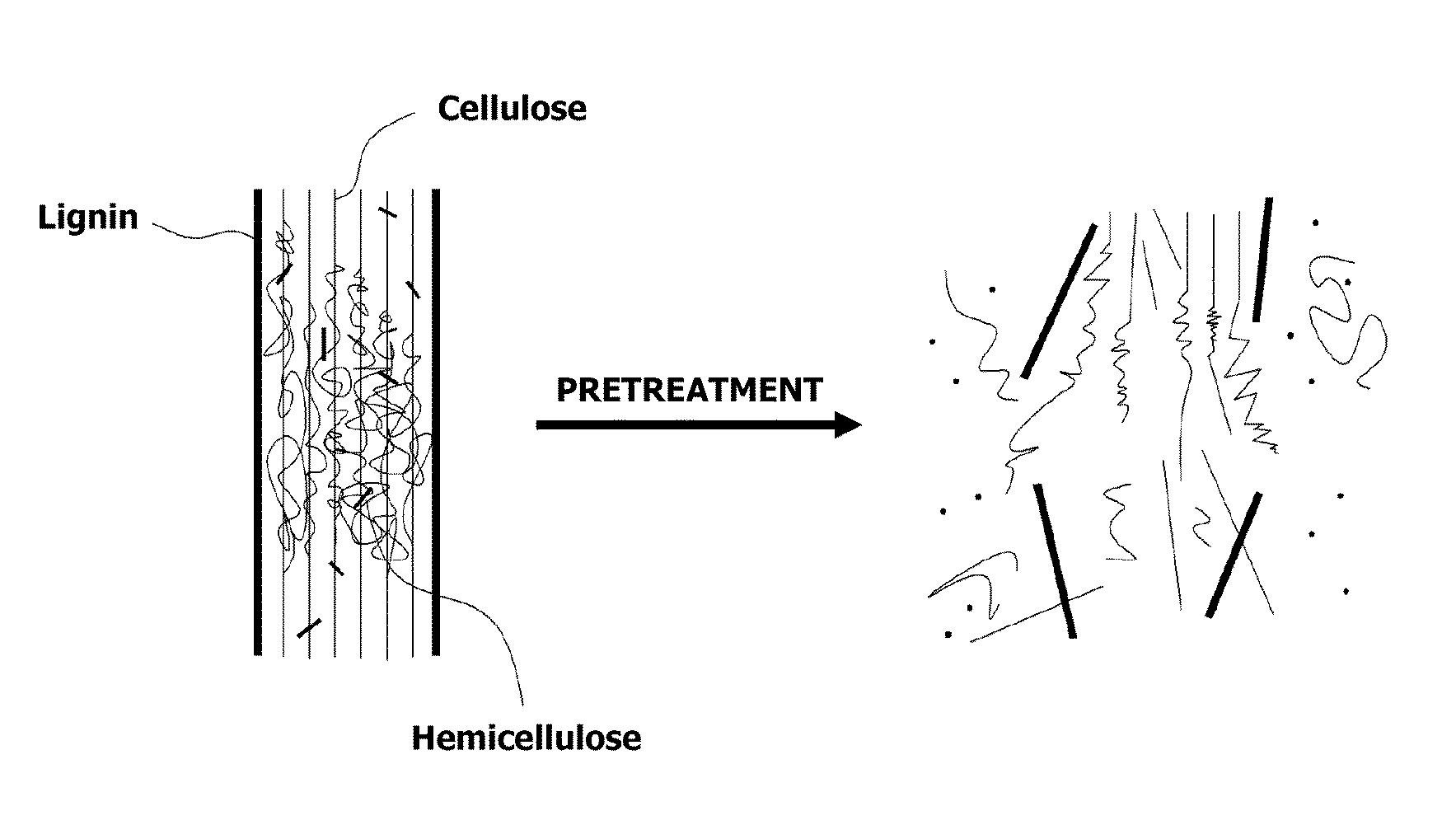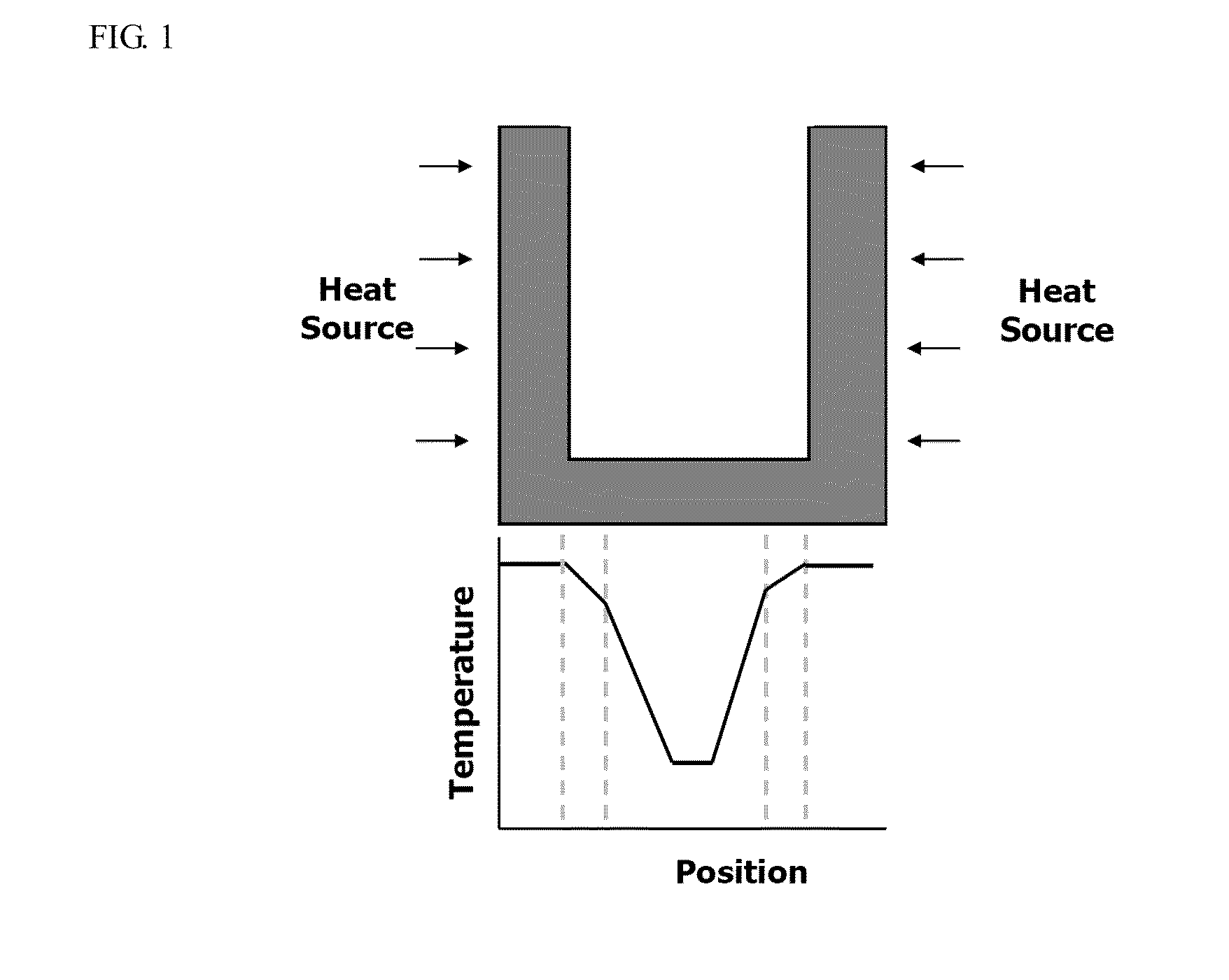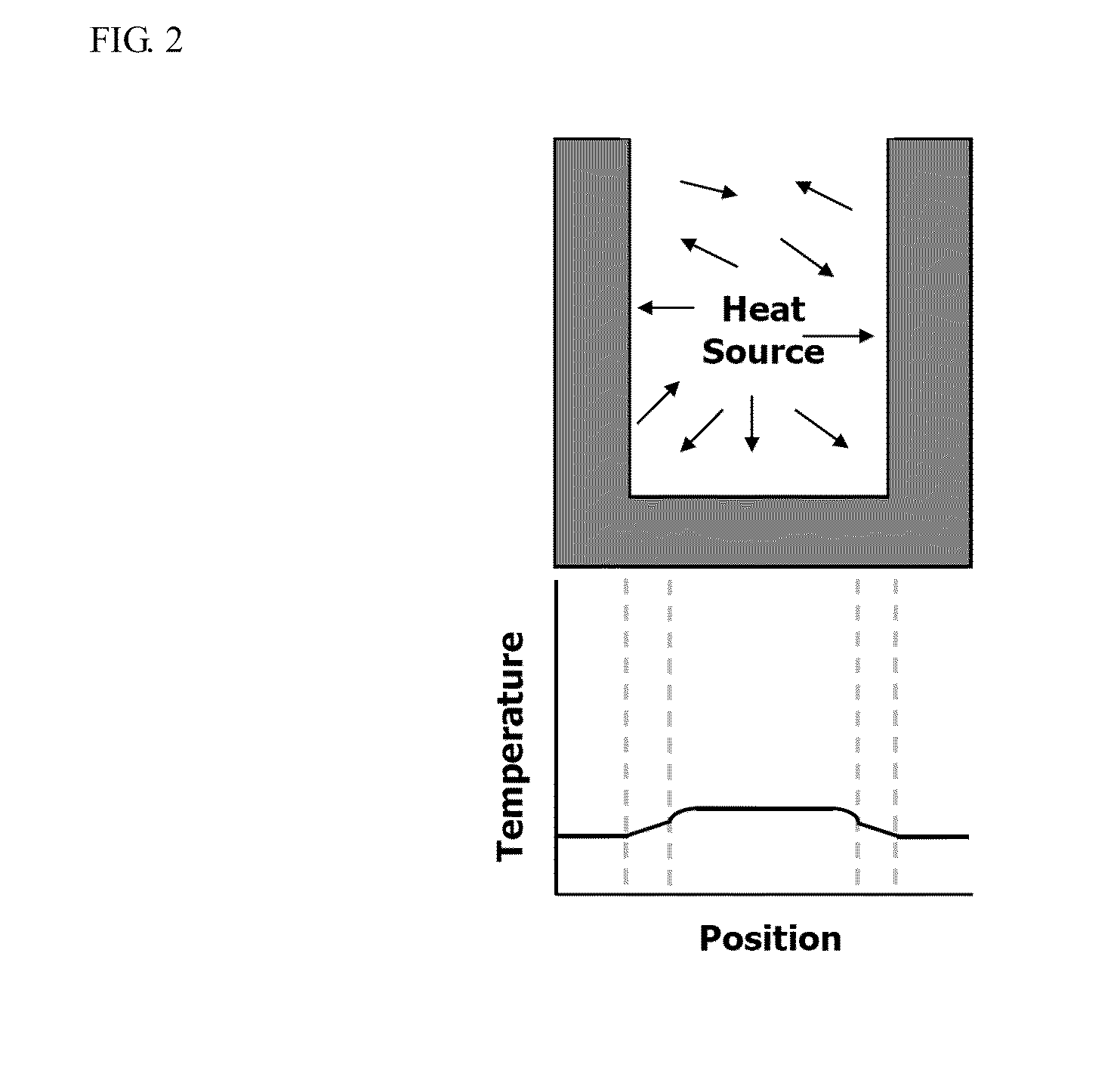Method and apparatus for pretreating biomass using internal heat
a biomass and internal heating technology, applied in the field of biomass pretreating using internal heating, can solve the problems of high production cos
- Summary
- Abstract
- Description
- Claims
- Application Information
AI Technical Summary
Problems solved by technology
Method used
Image
Examples
example 1
After an equivalent amount of water (20 g) was added to 20 g of completely-dried fragmented rice straw to wet it, a reactor having an inner volume of 125 ml was filled with the wet rice straw. The reactor is closed, and anhydrous ammonia gas at a pressure of 50 psi was input to the reactor at room temperature (25° C.). The added ammonia gas dissolves in the water in the wet rice straw to rapidly induce internal heating within the reactor by the exothermic reaction. Afterwards, the input of ammonia gas was stopped. During such a batch-type reaction, the internal heating reaction generated heat that raised the temperature within the reactor to a maximum of 65° C. within 1 minute. Pretreatment of the rice straw was performed with the reactor in the room temperature environment for 1 hour without any external supply of heat. The delignification rate determined is shown in Table 1.
To determine the effect of temperature on delignification, a reactor was filled with the reactants, and its ...
example 2
A volume of 90, 180, or 300 ml of water is added to 30 g of biomass in a reactor, and a water-reactive anhydride gas is provided to each reactor at different pressures to generate internal heat. Then, the initial temperature in the reactor is measured. Temperature changes according to biomass (solid): water (liquid) (S:L) ratios and the pressure of ammonia gas in the reactors are shown in Table 3.
TABLE 3Temperature changes according to biomass (solid):water (liquid)(S:L) ratios and the pressure of ammonia gas in the reactorsS:L = 1:3S:L = 1:6S:L = 1:1015 psi50626325 psi63656650 psi76808270 psi—89—100 psi —99—120 psi —115—
Referring to Table 3, the temperature in the reactor is directly proportional to the amount of water and the pressure of ammonia gas. When a pressure of 50 psi or more is provided, a temperature sufficient for pretreatment can be obtained. Reaction time for pretreatment of the biomass can be reduced under the high-temperature condition.
example 3
The fragmented rice straw pretreated for 1 hour after initially raising the internal reactor temperature to 65° C. by contacting anhydrous ammonia according to Example 1 was enzymatically saccharified using 50 mM citrate buffer at 50° C. according to a standard saccharification procedure of the National Renewable Energy Laboratory (NREL), United States Department of Energy, Technical Report NREL / TP-510-42629, March 2008. After the enzymatic saccharification, fermentation was performed using a pentose / hexose simultaneous fermentation strain. The yield of ethanol was 26.4 g based on 100 g of the fragmented rice straw.
PUM
| Property | Measurement | Unit |
|---|---|---|
| Temperature | aaaaa | aaaaa |
| Temperature | aaaaa | aaaaa |
| Fraction | aaaaa | aaaaa |
Abstract
Description
Claims
Application Information
 Login to View More
Login to View More - R&D
- Intellectual Property
- Life Sciences
- Materials
- Tech Scout
- Unparalleled Data Quality
- Higher Quality Content
- 60% Fewer Hallucinations
Browse by: Latest US Patents, China's latest patents, Technical Efficacy Thesaurus, Application Domain, Technology Topic, Popular Technical Reports.
© 2025 PatSnap. All rights reserved.Legal|Privacy policy|Modern Slavery Act Transparency Statement|Sitemap|About US| Contact US: help@patsnap.com



